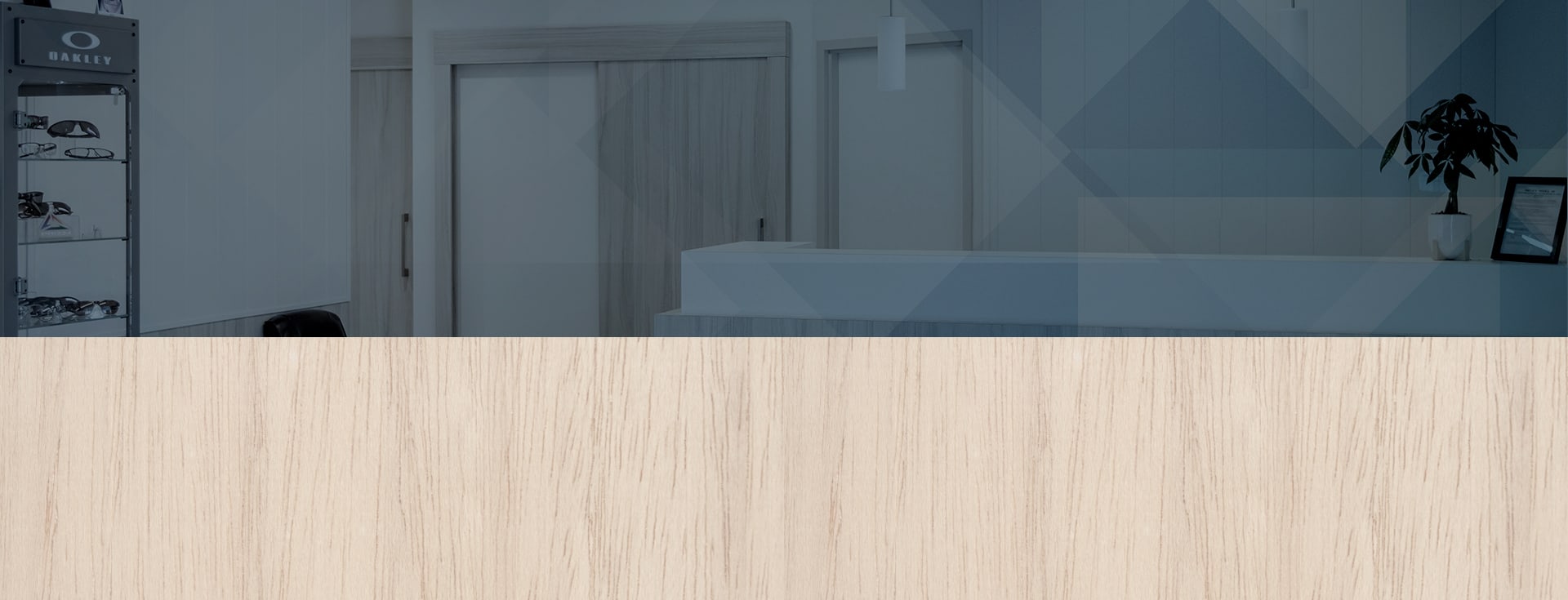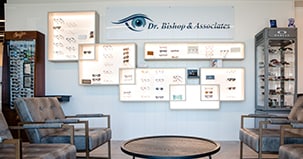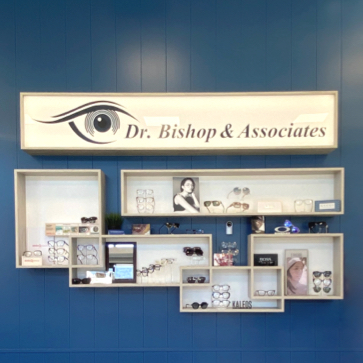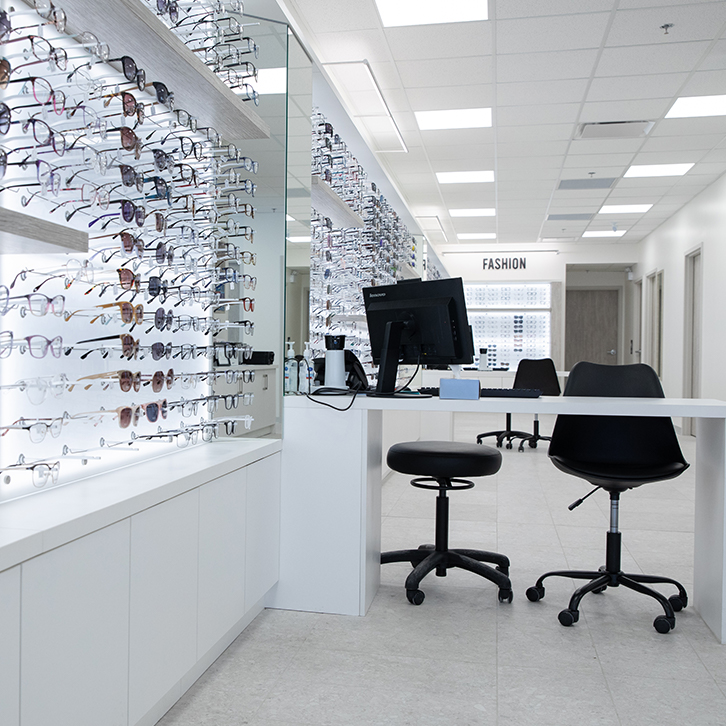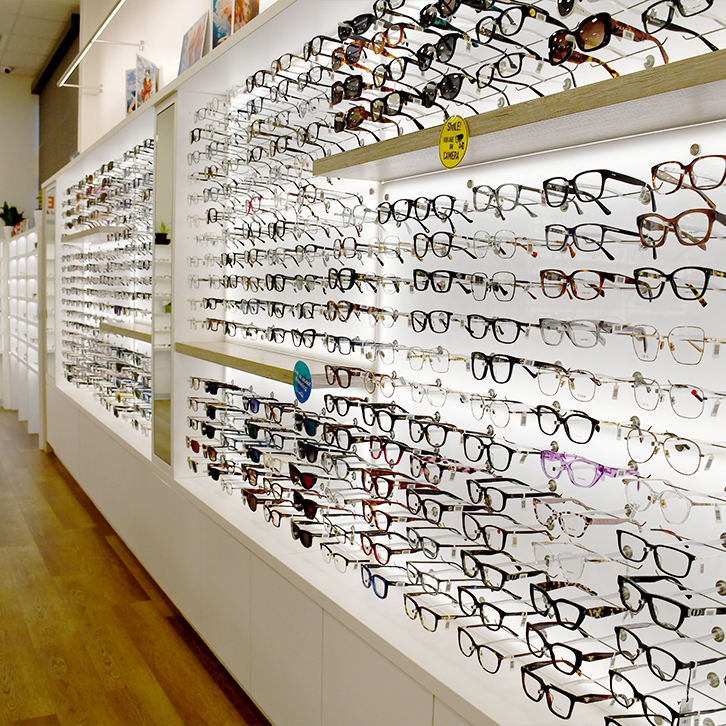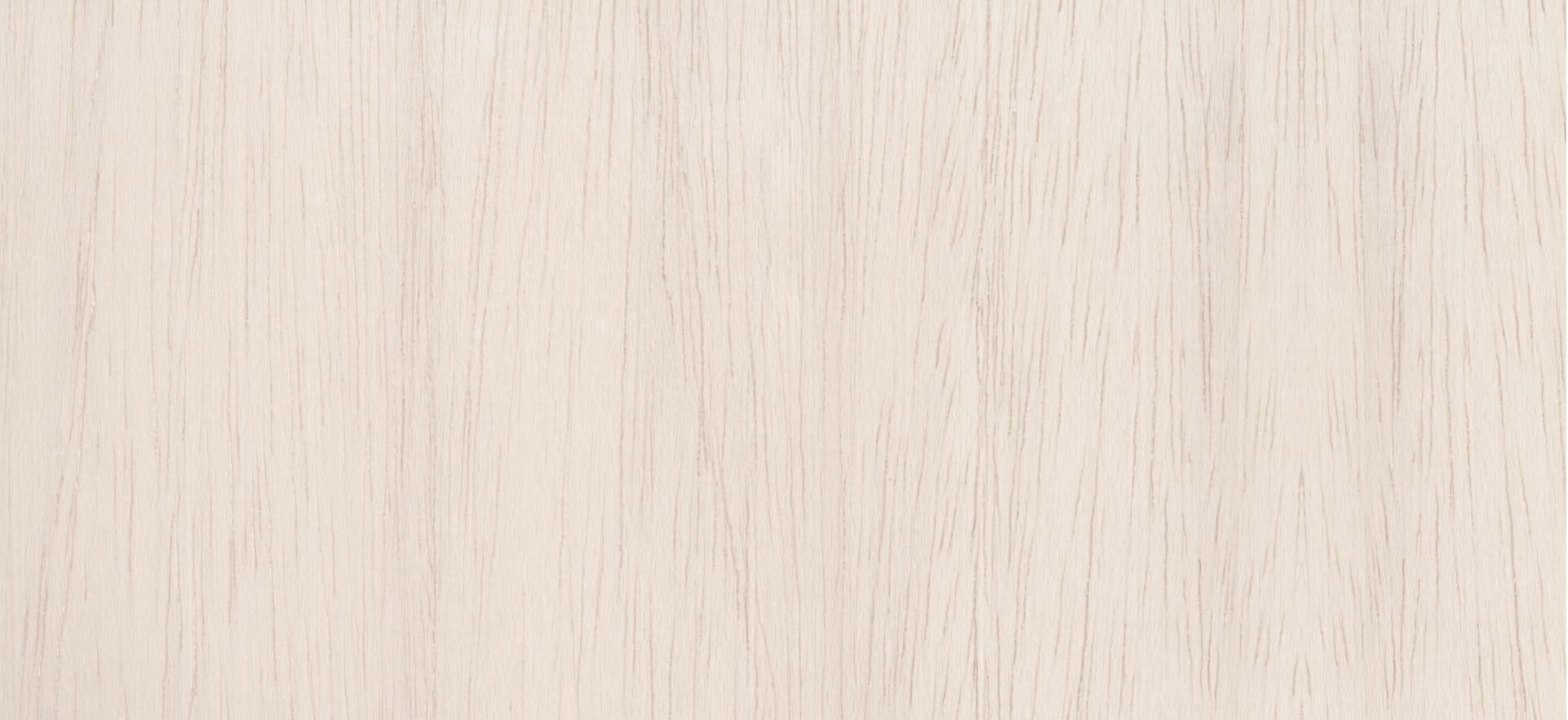If you have trouble seeing distant objects clearly, it could mean you have myopia. But don’t worry, you’re not alone. It’s estimated that nearly 30% of Canadians are affected by this refractive error.
Cases of low myopia can be corrected with glasses or contact lenses. If this eye condition progresses to high myopia, it can pose a threat to your healthy vision.
Visiting your eye doctor for yearly examinations will monitor your myopia and provide solutions to help prevent it from worsening.
What is Myopia?
Myopia, also known as nearsightedness, is an ocular condition that causes you to see objects close up clearly, but objects in the distance appear blurry.
Myopia is often detected in children and can be caused by both genetic and environmental factors. The eyeball can become elongated, or the cornea can have too much curvature. When light enters the eye, it can’t focus correctly onto the retina. Instead, light refracts in front of the retina, causing blurred distance vision.
Since myopia is often detected in childhood, some common signs you can look out for in your young one include:
- Excessive squinting or blinking
- Needing to sit closer to the TV or at the front of the classroom
- Frequently rubbing their eyes
- Headaches
Low vs. High Myopia
A prescription for nearsightedness is measured in diopters (D). Low myopia is considered to be -3.00 D or lower, and high myopia is considered anything -5.00 D or above.
Low myopia is more common, and although there is no cure, it can be corrected to prevent further progression. Correction can be done with prescription glasses, laser surgery, or specialty contact lenses.
High myopia not only significantly impacts your ability to see clearly, but it can put you at risk for visual conditions that can lead to blindness, even with the appropriate refractive treatment.
High Myopia & The Risks
A comprehensive eye exam can monitor myopia progression and detect an eye condition resulting from high myopia. If left untreated, high myopia can lead to sight-threatening diseases, including:
- Retinal Detachment: those with high myopia have more elongated eyes; therefore, the retina becomes more stretched and prone to tearing.
- Glaucoma: studies show patients with high myopia are at risk for developing glaucoma by nearly 50% more than those with low myopia.
- Cataracts: patients with high myopia have an increased axial length, which can prevent effective nutrient delivery to the back of the lens.
- Myopic Macular Degeneration: severe myopia can lead to cells in the retina thinning, causing myopic atrophy and decreased central vision.
It’s vital to visit your eye doctor for yearly comprehensive eye exams to monitor your eye health and to discuss myopia management methods.
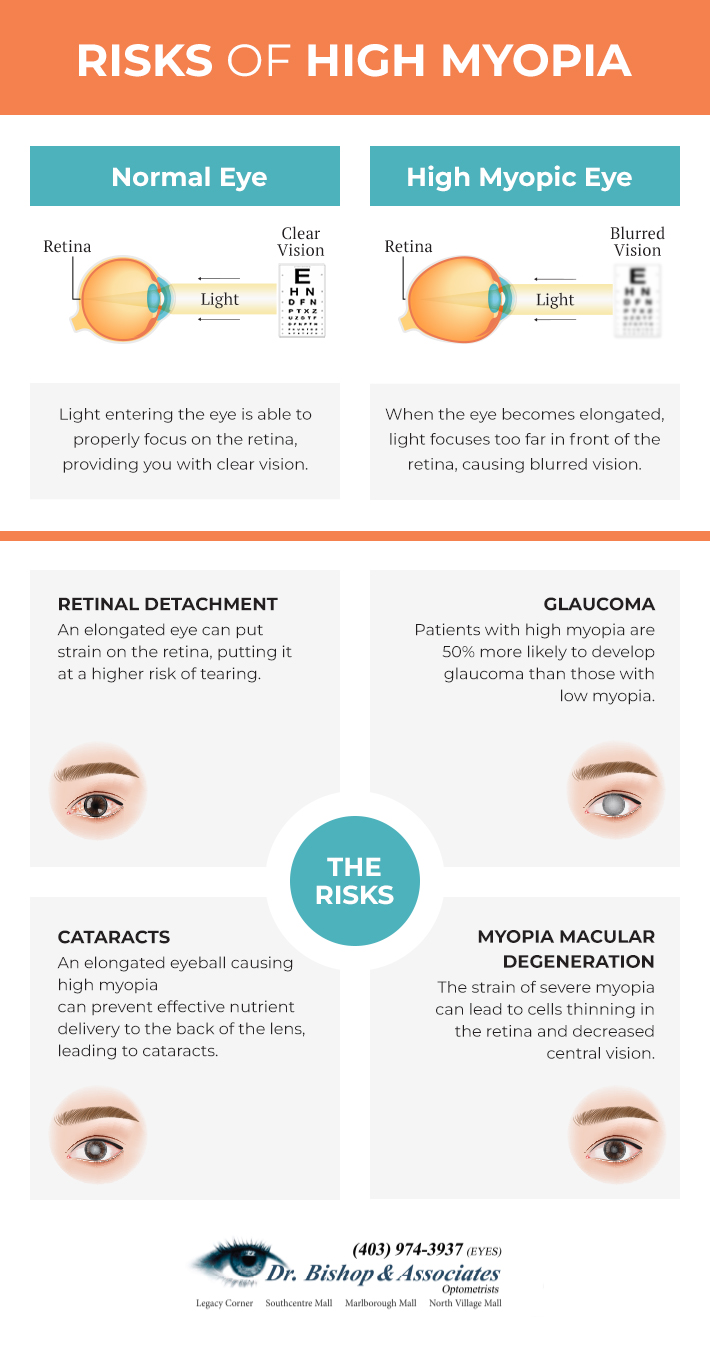
Preventing Blindness Linked to High Myopia
Preventing high myopia will in turn decrease the risks of vision loss or blindness. Discuss with your eye doctor what treatment options are available. Common myopia progression control options include:
- Ortho-K Lenses: rigid contact lenses that are worn overnight to gently reshape the cornea.
- CooperVision MiSight 1 Day: daily contact lenses that slow the elongation of the eye while correcting the refractive error.
- SightGlass Vision Spectacle Lenses: uses diffusion optics technology to softly scatter light and reduce contrast on the retina, helping to slow myopia progression. Dr. Bishop & Associates is excited to be one of the first optometrists to offer this treatment.
- Atropine Drops: a low dose of atropine relaxes the eye’s focusing mechanisms helping to treat myopia progression.
- Acuvue Abiliti: daily contact lenses designed to correct vision while slowing myopia progression for children 7–12 with a prescription of -0.75D to -4.50D.
- Stellest Lenses: when worn for 12 hours a day, these lenses slow down the advancement of myopia by 67% compared to single vision lenses.
- Hoya Vision MiyoSmart Lenses: alternates focus and defocus areas on the lens to provide clear vision and control myopia at the same time.

Protect Your Sight
Preventing the development of high myopia decreases the risk of vision loss in the future. Visiting your eye doctor for a yearly check-up is the easiest way to ensure you’re on the right path to a lifetime of healthy vision.


